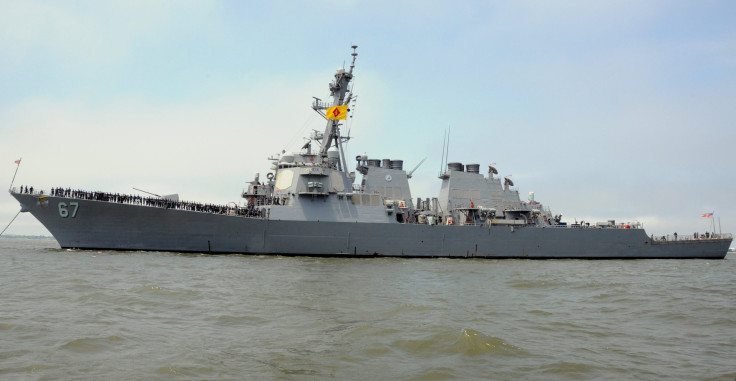War In The Middle East: US Sends Additional Warships To Arabian Peninsula

The U.S. Navy plans to deploy two additional advanced warships to patrol the waters at the entrance to the Red Sea, Sputnik News reported Monday.
The USS Laboon and the USS Truxtun will join U.S. naval forces already in the Bab el-Mandeb Strait, which separates the southwestern tip of the Arabian Peninsula from Africa, to combat Houthi rebels off southern Yemen and potential aggression from the Iranian navy.
The USS Laboon and the USS Truxton embarked for the Middle East from their home base at the Norfolk Naval Station in Virginia on Jan. 21 and arrived in the Mediterranean Sea Feb. 2 en route to their final destination, spending a number of days at the U.S. naval base in Souda Bay, Greece. They then traveled to the eastern Mediterranean to conduct aerial strikes against Islamic State militants and infrastructure Monday as they continued to make their way to the Bab el-Mandeb Strait, reports said Tuesday.
Bab el-Mandeb Strait is the southern entrance to the Red Sea.
The arrival of the additional U.S. warships in the Red Sea region follows a suicide boat attack by Houthi rebels on Jan. 30 that killed two Saudi Arabian sailors on a Saudi warship. A coalition of armed forces headed by Saudi Arabia responded by launching a campaign to rid the Bab el-Mandeb Strait of Houthi rebels. Though the Saudi military operation successfully got Houthi rebels to abandon many of its bases on the Yemeni coast, the fleeing rebels littered multiple harbors with mines, prompting the U.S. Navy to send the additional ships because of a lack of “freedom of navigation" in the Bab el-Mandeb Strait.
The Houthis are an extremist group that follows Shiite Islam and attracted the international spotlight after emerging victorious in the Yemeni Civil War in January 2015. The group is reportedly allied with and given weapons by Iran.
Houthi rebels launched two missiles against a U.S. Navy warship on Oct. 9, but neither struck the target. The U.S. military responded by conducting cruise missile strikes on the Houthi-controlled areas in Yemen, which obliterated many of the radar stations the rebels had been using to detect American warships.
The deployment of the two additional warships to the Bab el-Mandeb Strait came roughly two weeks before the U.S. sent another Arleigh-Burke class destroyer named the USS Cole on Feb. 3 to the body of water known to host bands of Somali pirates that prey on foreign freighters.
When the USS Cole was last deployed to the Red Sea region it barely made it back in one piece after being hit by an al Qaeda suicide boat attack on Oct. 12, 2000, that killed 17 U.S. sailors and injured 39 others.
The European Union, Russia and China all have sent warships to the Red Sea area to safeguard their shipping vessels from Somali pirates, predominately members of the Islamist militant group al-Shabab. The number of sailors kidnapped by Islamic extremists in 2016 was the highest in the last decade, according to a January International Maritime Bureau report.
© Copyright IBTimes 2024. All rights reserved.






















